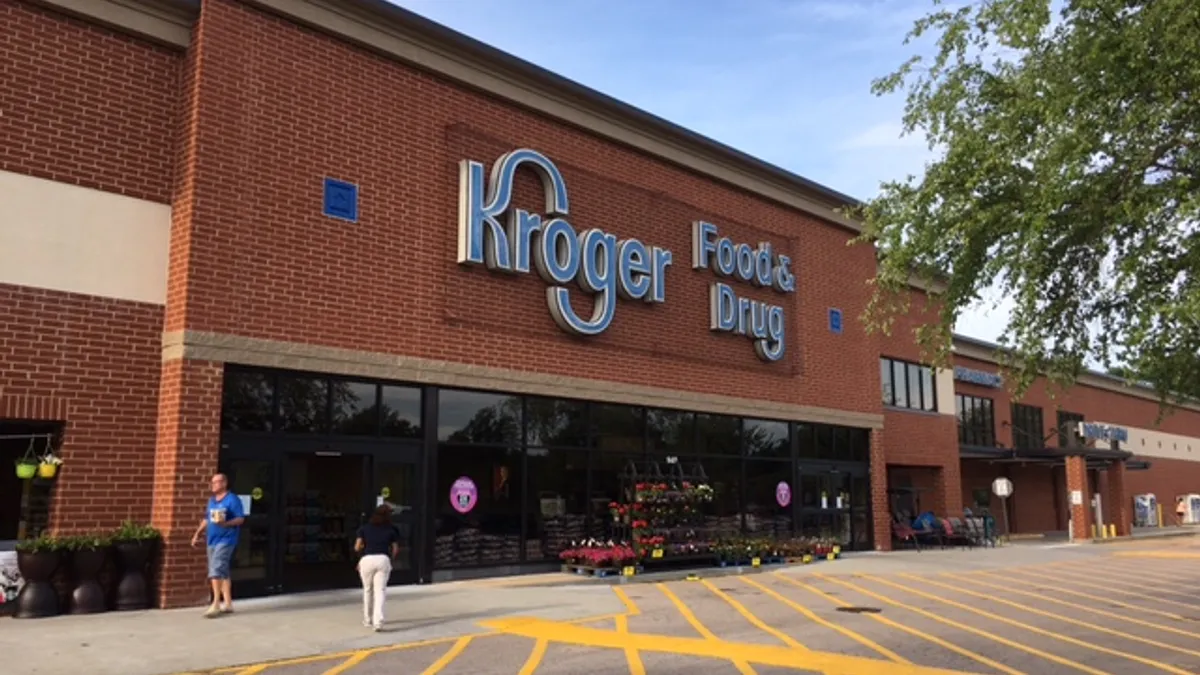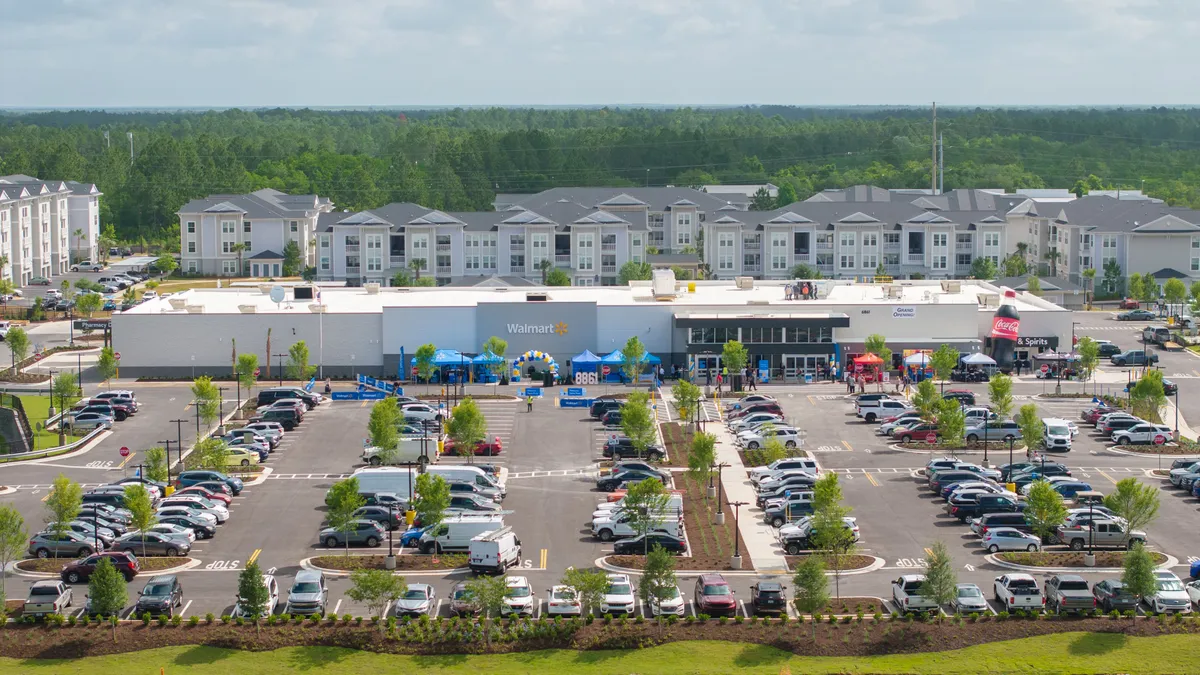Dive Brief:
- Kroger’s better-than-expected third quarter earnings indicate it may be better equipped to fend off Amazon and its newly acquired Whole Foods stores than many expect, according to Bloomberg columnist Sarah Halzack. Investors have certainly warmed to the retailer, with its stock shooting up more than 11% yesterday.
- Kroger’s comp-store sales are just a fraction of what they were two years ago, but they have steadily improved every quarter after bottoming out in last year’s fourth quarter. The company’s Restock program may deliver continued growth, but Halzack credits Kroger’s success to its sheer size, experience and ability to negotiate lower prices with its suppliers.
- Amazon’s acquisition of Whole Foods has hammered Kroger’s stock, and while the e-tailer remains a proven disruptor in the retail industry, its plans in grocery still remain mostly unknown. It’s possible, Halzack wrote, that old-school retailers like Kroger could put up a strong fight in the food war ahead.
Dive Insight:
Kroger’s stock plummeted more than 25% after Amazon bought Whole Foods this June, and the share price hasn’t moved much since then as the nation’s largest grocer has struggled to convince investors it’s a solid buy.
Other competitive threats, including discounters and a surging Walmart, which reported its strongest food sales in several years earlier this month, certainly haven’t helped. But yesterday’s strong earnings release seems to have convinced at least some investors of what Kroger has been saying all along: It knows how to handle tough industry competition.
The company’s Restock plan isn't the transformative strategy some had hoped for. But it plays to Kroger’s core strengths — including size, experience and its deep investments in data science. The plan seeks to do more with less, and that’s exactly what the retailer — whose gross margins increased in Q3 despite falling prices — seems to be doing.
Can Kroger keep this momentum going? Its investments in pricing seem to be paying off, but much depends on how Amazon and its Whole Foods stores evolve. As Halzack notes, much of the e-tailer’s threat to the industry is based on speculation. But we can speculate with a high degree of certainty that Amazon will keep lowering prices, and that it will eventually come out with a very attractive e-commerce solution. We also know it will expand its Prime loyalty program, which gives the company access to more than 80 million U.S. consumers.
On the other hand, Amazon’s inexperience in grocery and Kroger’s ability to counterpunch can’t be discounted. Amazon seems to be moving Whole Foods towards the middle from a sourcing and operational standpoint. The specialty grocer has cut ties with many niche suppliers as it centralizes its buying practices. Kroger, in response, has said it wants to welcome more of these small suppliers into its stores. Of course, whether Whole Foods’ strategy sullies its image, and whether Kroger does in fact become a champion of cottage manufacturers, remains to be seen.
Kroger’s strong quarter is also a sign that it’s fending off Walmart’s advances. The mega-retailer is making appeals to higher-income shoppers through its store remodels and revamped fresh departments, but Kroger seems to be making it hard for customers to defect. Likewise, its ClickList program seems to be further securing customer loyalty against Walmart’s own rapid store-pickup expansion. Kroger’s digital sales grew an impressive 109% in the third quarter.
Yesterday’s results are a good sign for Kroger, but they’re far from proof that the Amazon threat has been overplayed. The online retailer has a lot left to show the industry, and its considerable resources, its track record in retail and its innovative spirit make it hard to bet against.










